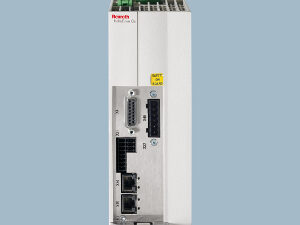Do more with less. Faced with this modern refrain and releated technical demands, budget cuts, and time constraints, engineers seek more capabilities, distance, accuracy, and communication buses in new measurement systems.These were key needs of 1,150 engineers polled in the third annual "Measurement Needs Tracking Survey" by Keithley Instruments Inc.
Rosemont, Ill. — Do more with less. Faced with this modern refrain and releated technical demands, budget cuts, and time constraints, engineers seek more capabilities, distance, accuracy, and communication buses in new measurement systems.
These were key needs of 1,150 engineers polled in the third annual “Measurement Needs Tracking Survey” by Keithley Instruments Inc. (Cleveland. O.). Unveiled here at Sensors Expo on Oct. 6, the study tracks and analyzes changes in measurement patterns and engineering requirements in text and measurement/data applications.
Continuing a pattern demonstrated over the past three years, respondents report they’ll need dramatic increases in future measurement performance in most parameters:
-
More than 33% will need more than 1,000 readings/sec in one to three years. Now, only one in five must have that many readings.
-
Those requiring 18-bit resolution or better will triple from 7% of engineers today to 23% in the future.
-
Engineers requiring 0.10% of full-scale range accuracy or better will jump from 3% in 1997 to 26% in 1998 and 47% in the future (see chart).
The survey also projects long-distance and remote data acquisition tasks will increases from 18% requiring at least 31 ft now to 28% needing that length in the near future. Likewise, remote applications—those acquiring data from off-site sensors—are expected to increase from 19% of applications now to 62% in the future.
Though technical problems have been traditional foes, the engineers in Keithley’s study say the biggest barriers are too little funding and too little time. “In this study’s first year, instrument and sensor performance respectively were the top barriers. Now, more engineers are struggling with budget and staff cuts that put integration and set-up time at a premium,” says David Patricy, vp/gm of Keithley’s test and measurement group. “Instrument companies must respond by making our products simpler to use and easier to configure.”
In addition, Keithley’s survey further revealed an ongoing shift in communications protocols, principally the emergence of USB, Firewire, and other high-speed serial paths. When asked what buses engineers are currently using, the respondents reported a decline in 4-20 mA and a hike in Firewire. They also projected a future shift away from serial port solutions and 4-20 mA to USB, Firewire, and Ethernet.
On internal computer bus backplanes, responding engineers forecast a move toward PCI and CompactPCI bus products and away from ISA and CardBus. They added they’re most satisfied with PCI bus solutions.
Finally, Keithley’s study found that 25% of respondents still use DOS as a measurement platform, and 30% rely on Microsoft Windows 3.1 environments. However, while 6% use Windows 98 now, 21% plan to use it soon. And, while 37% currently use Windows NT, 56% plan to use it in the future. For more information, visit www.controleng.com/info .



